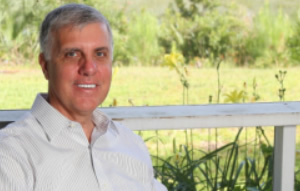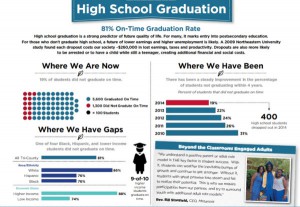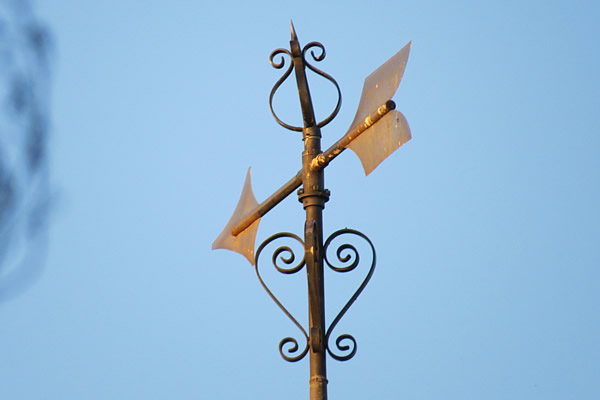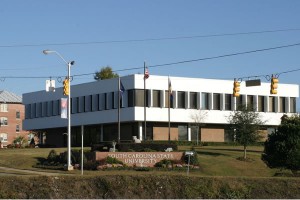
Last week’s freezing weather created a lot of icy still life images in area ditches and streams. Take a look here how a piece of clover is suspended in ice like a modern-day fly in amber. Photo by Andy Brack.
IN THIS ISSUE (FEB. 23, 2015 | Number 7.17)
FOCUS: Tinkler shares why he’s running for mayor
BRACK: Mayor’s race is shaping up
MONEY: Report highlights good things in education
IN THE SPOTLIGHT: Charleston Green Commercial
GOOD NEWS: Magnolia Plantation promotes dog adoptions
FEEDBACK: Refreshing, accessible site
REVIEW: The Stories
CALENDAR: Museum forum, conference, DIY, more
MYSTERY PHOTO: Where’s this weather vane?
S.C. ENCYCLOPEDIA: S.C. State University
FOCUS
Tinkler: Let’s build on our successes
EDITOR’S NOTE: Between now and the November mayoral election, we are offering an opportunity for each of the declared candidates to write a column outlining why they want to be mayor. Candidates get to pick their publication date on a first-come, first-served basis. Content related to the race is archived here.
By Paul E. Tinkler
FEB. 23, 2015 — For the first time in 40 years, Charleston will be electing a mayor without the name Joe Riley. I believe it is important to explain why I am running as a candidate to be Charleston’s next mayor and to explain my vision for our city.
I believe in Charleston. It was here in Charleston that Libby and I raised our family. It was here in Charleston that I have found success as an attorney and small business owner. I know Charleston is the best city in the world. Charleston is both a city that I love and a city that has afforded to me countless opportunities. That is why I am dedicated to seeking new opportunities for this city to succeed and thrive.
This dedication inspired me to run for city council in 1997. Serving on city council became one of the most rewarding eras of my life. Despite early opposition, we managed to push for the passage of Charleston’s smoking ban ordinance. Next, we prudently achieved the highest bond rating possible for the city and ensured its stellar financial stability. My principles of leadership are simple: Seeking practical solutions to make my district and city safer and leading efforts to preserve Charleston as a beautiful place to live and raise a family. Achieving these principles are the reasons I am running for mayor.
My principles of leadership are simple: Seeking practical solutions to make my district and city safer and leading efforts to preserve Charleston as a beautiful place to live and raise a family.
Charleston’s next mayor must be ready today to tackle our city’s most pressing issues tomorrow. West Ashley deserves revitalization along the Sam Rittenberg Boulevard corridor. Citadel Mall, likewise, needs to be reinvented to meet the growing needs of a dynamic 21st century community.
Lowcountry infrastructure requires deliberate forethought to handle Charleston’s continual growth. For example, completion of I-526 is a top priority for many citizens. We must ensure that there is adequate housing available to the city’s workforce. We also must ensure that Charleston is both business-friendly and open to innovation. My goal as mayor will be a simple one: Build on the amazing success that Charleston has already witnessed, so our city can become even better.
I believe, and many agree, that Joe Riley has done a phenomenal job as mayor. Most agree that Charleston would not be the city it is today without Mayor Riley’s tireless efforts. Our city is the best in the world, but Charleston is not flawless. Real issues confront the next mayor that will need to lead the way on finding solutions. West Ashley needs revitalization, our infrastructure must be upgraded and tourism issues require more diligent monitoring.
The good news is that these are achievable goals. We already have the best resource at our disposal to build on the best and to make Charleston everything I believe it can be. That valuable resource is the spirit of Charlestonians. I am stepping forth as a candidate for Charleston’s next mayor because I know how great Charleston is, and I want to leave this great city even better than I found it.
You can learn more about my background and my issues at http://www.Tinklerformayor.com. Please feel free to contact me at Paul@Tinklerformayor.com should you have any questions.
Charleston is a great city, and together, we can build on the best!
Paul E. Tinkler is a King Street attorney with more than 30 years of experience. He and his family live in West Ashley.
BRACK
Mayor’s race is shaping up
FEB. 23, 2015 — Boy, this year’s race to replace Charleston Mayor Joe Riley, retiring in his 40th year at the top spot, is shaping up to be a doozy.
![]() First, just try to wrap your brain around the notion of whether anyone can replace Joe. The obvious answer is no one can because the mayor has so embedded himself into all facets of city life that anybody who takes over for him just won’t measure up. In other words, whoever wins among the explosion of candidates seeking the job is pretty much setting up himself or herself for failure.
First, just try to wrap your brain around the notion of whether anyone can replace Joe. The obvious answer is no one can because the mayor has so embedded himself into all facets of city life that anybody who takes over for him just won’t measure up. In other words, whoever wins among the explosion of candidates seeking the job is pretty much setting up himself or herself for failure.
But the office must go on and the city needs a new leader. So secondly, take a look at how many candidates are actually running. There were at least six formal candidates until restaurateur Dick Elliott dropped out earlier this month. By my count, the race currently features Realtor Henry Fishburne, council member William Dudley Gregory, state Rep. Leon Stavrinakis, Realtor John Tecklenburg and attorney Paul Tinkler.
 But there will be more. Former Riley campaign manager and Secretary of State candidate Ginny Deerin also has opened a campaign account but not announced formally. There are others who may run — Aubrey Alexander, state Rep. Wendell Gailliard, Dean Riegel, Mike Seekings and Maurice Washington.
But there will be more. Former Riley campaign manager and Secretary of State candidate Ginny Deerin also has opened a campaign account but not announced formally. There are others who may run — Aubrey Alexander, state Rep. Wendell Gailliard, Dean Riegel, Mike Seekings and Maurice Washington.
One thing is for sure, voters will have choices in the fall. More than likely to make a runoff, the top two candidates will only have to get a 20 percent to 25 percent share of the November vote. The likelihood of one candidate getting 50 percent in Charleston’s supposedly non-partisan race (everybody knows which party anyone is in) is less than slim to none.
The third thing to consider when thinking about the mayor’s race is how issues are shaping up to be divisive. Already, it’s pretty clear that these issues are coming to the forefront:
- Should Charleston go along with the Beach Company’s proposal to squeeze hundreds of people and a grocery store in the space occupied by the Sgt. Jasper building on the peninsula? When is enough development enough?
- Should the city continue to let hotel expansion grow seemingly out of control? At what point do the hotels start making Charleston more like an adult Disneyland than a vibrant city?
- What is the real plan to manage growth and develop a vision for Charleston for decades to come so that we shape our destiny and aren’t shaped by it?
- How are we going to deal with infrastructure challenges, including affordable housing and smoother transportation to reduce gridlock?
What are your thoughts about the coming mayor’s race? Send them to: editor@charlestoncurrents.com.
Hats off to the Palmetto Project
Because some 48 percent of eligible South Carolina residents signed up for health insurance under the Affordable Care Act during the 2015 open enrollment period, the Palmetto State has the nation’s 10th best percentage ranking among states for people participating in plans, the Palmetto Project said Saturday.
 “This is a big, fat shot in the arm for our state’s workforce,” said Executive Director Steve Skardon. “Healthy workers equal a healthy economy. The ACA really helps states like South Carolina where so much of the workforce is in agriculture, tourism, small businesses, self-employment or multiple part-time jobs. We also have relatively high numbers of older workers under 65 who are trying to get by in second and third careers. These are the kinds of people the law is supposed to help. Until now, they were just out of luck if they got sick.”
“This is a big, fat shot in the arm for our state’s workforce,” said Executive Director Steve Skardon. “Healthy workers equal a healthy economy. The ACA really helps states like South Carolina where so much of the workforce is in agriculture, tourism, small businesses, self-employment or multiple part-time jobs. We also have relatively high numbers of older workers under 65 who are trying to get by in second and third careers. These are the kinds of people the law is supposed to help. Until now, they were just out of luck if they got sick.”
The Mount Pleasant-based nonprofit deserves a big pat on the back for what it has been doing to promote a healthier South Carolina.
According to data from the Kaiser Family Foundation, some 209,773 eligible South Carolinians — almost half of those who could — enrolled in one of the dozens of plans offered by private insurers at HealthCare.gov during the 2015 open enrollment period, which started in November. Last year, the Palmetto Project was chosen by the federal government to lead statewide navigation and enrollment efforts.
Now the organization’s challenge is to continue to reach out during a new special enrollment period from March 15 to April 30 for South Carolinians who didn’t have health insurance in 2014 and didn’t sign up by Feb. 15, 2015. The special enrollment period will allow people who didn’t have the coverage to sign up and not pay a $95 penalty for every uninsured adult on 2014 tax returns.
The Palmetto Project says it will continue to operate its statewide outreach and enrollment initiatives during the special enrollment period. Any South Carolina resident can find in-person assistance locally or over the phone at 1-888-998-4646 or visit the organization online at PalmettoProject.org or SignUpSC.com.
MONEY
Report highlights good things about education
By Kyra Morris
FEB. 23, 2015 — Want to read something good about education in South Carolina and specifically Charleston? Several years ago, the greater community came together to create an organization whose purpose is to maximize resources and foster an environment of collective impact where young people of all socio-economic backgrounds can reach their fullest potential. New initiatives within schools from pre-school through post-secondary are in place to support youth development from cradle to career.
 Inspired by Anita Zucker and many other community partnerships, the Tri-County Cradle to Career Collaborative was formed. Cradle to Career was modeled after a program in Cincinnati called Strive. Strive experienced fast and ongoing success with a 72 percent increase in kindergarten readiness and reduced drop-out rates among high school students. Although the collaborative does not implement programs, it aligns resources that provide students and their families with continuous stream of support.
Inspired by Anita Zucker and many other community partnerships, the Tri-County Cradle to Career Collaborative was formed. Cradle to Career was modeled after a program in Cincinnati called Strive. Strive experienced fast and ongoing success with a 72 percent increase in kindergarten readiness and reduced drop-out rates among high school students. Although the collaborative does not implement programs, it aligns resources that provide students and their families with continuous stream of support.
“For the first time leaders from our region’s top businesses, school systems, colleges/universities, foundations, not-for-profits and governments have agreed to align our efforts to ensure every child in the tri-county region will graduate from high school prepared for either further education or employment in the modern workforce.”
– Anita Zucker, Chair and CEO, The InterTech Group
Five education and career goals were published in 2013:
- Every child will be prepared for school
- Every child will be supported in and out of school
- Every child will succeed academically.
- Every child will graduate high school prepared for either further education or employment in the modern workforce.
- Every student enrolled in a post-secondary education will complete successfully and will enter a career.
Health is also a component of Cradle to Career. It is critical to make sure children, parents and businesses received the support they needed to be successful. The desire is not for a narrow focus on health, but a broad perspective, making sure people have the basics like sufficient food to eat and also the knowledge of good health habits and with access to good health.
Total community involvement is another aspect of the collaboration. The resources are gathered and communicated to align the work talent needed within organizations with the education of our young people from birth to early adulthood. For example the Economic Scorecard for our community was published and circulated by the Charleston Chamber of Commerce and others. This provides guidance for the education needed and the gaps that exist. With the use of this report we can encourage the business community to enter education and the education community to interact more closely with businesses.
An example of the collaborative and its support is the Education and Development for Graduation and Employment (EDGE) academies. These are also called “career academies.” These are schools within high schools that have a career focus. Academies for the past several years focus on STEM (science, technology, engineering and math), health sciences and hospitality/culinary, and now a Financial Services Academy began in Dorchester County. The idea is to get students involved and excited about a career pathway before they graduate high school. The programs integrate traditional education with career focused education along with business intern opportunities. Students can finish high school with skills already established to start jump start careers in their chosen field.
Another outcome is that students see firsthand that their education leads to benefits both economically and personally. The Charleston Metro Chamber of Commerce started a program a couple of years ago that funds scholarships for qualified students coming out of the academies. These scholarships provide 100 percent of the costs of education to those who choose to pursue associate’s degrees. Also from these inspired moves, many businesses are hiring these young people and providing pathways to combine work and education.
The Tri-County Cradle to Career Collaborative (TCCC) released its first Regional Education Report in January of 2015. The report provides a comprehensive overview of key educational outcomes for public school students in the tri-county area (Berkeley, Charleston and Dorchester counties) at eight assessment points ranging across the continuum from kindergarten readiness to postsecondary. The report is not a glowing report of success so far in our education system. There is so much that needs to be done.
The focus though is not on the negative, but on the opportunity. The TriCounty Cradle to Career Collaborative provides a foundation and a forum for all of us to get involved. Positive things are happening. If you want to keep reading good things about education in South Carolina and especially Charleston, it may be up to you. You can make a difference.
Kyra Hollowell Morris, a Certified Financial Planner, is CEO of Morris Financial Concepts, Inc., in Mount Pleasant. A national leader in the financial planning profession, she has been named several times by leading magazines as one of the country’s top financial planners.
IN THE SPOTLIGHT
Charleston Green Commercial
 Charleston Green Commercial is a full-service commercial property management company that pays attention to detail, provides exceptional personal service and is committed to adding value to buildings. Offering professional property management, consulting and other services, the company strives to improve clients’ bottom lines with superior service, accessibility, reliability and a wealth of knowledge of the Charleston real estate market. By blending use of proven contractors and contacts with environmentally-conscious practices, the company helps clients stay on the leading edge of commercial real estate practices. More.
Charleston Green Commercial is a full-service commercial property management company that pays attention to detail, provides exceptional personal service and is committed to adding value to buildings. Offering professional property management, consulting and other services, the company strives to improve clients’ bottom lines with superior service, accessibility, reliability and a wealth of knowledge of the Charleston real estate market. By blending use of proven contractors and contacts with environmentally-conscious practices, the company helps clients stay on the leading edge of commercial real estate practices. More.
GOOD NEWS
Magnolia Plantation promotes dog adoptions
Magnolia Plantation and Gardens, one of America’s most dog-friendly destinations, is offering free annual memberships to families that adopt a dog from a Lowcountry animal shelter or pet adoption program.
Coupons for one free annual membership are available at the Charleston Animal Society in North Charleston, the Francis R. Willis Society for the Prevention of Cruelty to Animals in Summerville, Pet Helpers on James Island and through the recently formed Sinbad-Sadie Second Chance Rescue.
![]() Coupons will be available until March 31. After a dog is adopted, redeem the coupon at the Magnolia office to receive an annual membership card. The annual family membership is a $100 value.
Coupons will be available until March 31. After a dog is adopted, redeem the coupon at the Magnolia office to receive an annual membership card. The annual family membership is a $100 value.
Magnolia welcomes leashed dogs 365 days a year. Magnolia is listed in the “Ruff Guide to the United States: 365 of the Best Places to Stay & Play With Your Dog in all 50 States.”
Also at Magnolia: The 5th annual photo contest, which is open from March 1 to May 31. Contact the Lowcountry Photographic Club for rules and contest info.
More good news:
SEWE: Congratulations to the folks at the Southeastern Wildlife Exhibition who reported Friday that the Feb. 13-15 arts and sporting event was a success with sales up 15 percent over the 2014 event’s numbers. Despite freezing temperatures, attendance was up and well over 40,000 people, official said. Next year’s event will occur Feb. 12 to Feb. 14. More.
Big birthday: The Citadel will celebrate the 172nd birthday of the South Carolina Corps of Cadets with a Corps Day weekend of events scheduled for March 12 to March 15. Corps Day is one of the most highly attended weekends at The Citadel with attractions including dress parades, awards presentations, special cadet performances and athletic events. A highlight is the mess hall birthday celebration in which the oldest alumnus and the youngest cadet in the corps share cake-cutting honors. Most Corps Day events are free and open to the public. To see the full 2015 Corps Day weekend schedule please click here.
Lots of library events: March is a busy month at the Charleston County Public Library. Just look at all of these events:
- Digital storytelling movie premiere, 5 p.m., March 5, Main Library auditorium. You’ll be able to see completed digital storytelling projects from the library’s “I Want To Tell You” contest.
- Book sale: March 5 to March 7, Mount Pleasant Regional Library. Friends of the Library will have this annual sale to benefit the public library with scads of great and inexpensive books, tapes and CDs.
- Charleston Tells storytelling festival: March 13-14. Some of the nation’s and region’s best storytellers will be at Wragg Square for outstanding performances. Learn more here.
FEEDBACK
Refreshing, accessible site
To the editor:
![]() Congratulations on the new look of Charleston Currents. It takes courage to try to improve something that really wasn’t broken.
Congratulations on the new look of Charleston Currents. It takes courage to try to improve something that really wasn’t broken.
The look is refreshing, the accessibility is efficient, and the readability is as good as ever. Well done.
– Dave Brown, Charleston, S.C.
If you have an opinion on something we’ve offered or on a subject related to the Lowcountry, please send your letters of 150 words or less to: editor@charlestoncurrents.com | Our feedback policy.
REVIEW
The Stories, by Jane Gardam
![]() From a homeless man looking for a private place to bathe, to a discovery of Jane Austen’s secret love letters, to smug socialites seeking to pay tribute in death to a nanny they took for granted in life, to a couple curmudgeonly widowers finding that life is too short to hold life-long grudges, The Stories is an excellent introduction to the illustrious talent that is award-winning author Jane Gardam. Collected from previously published works, readers can see Gardam’s artistic growth from 1977 to 2007, but also her long-standing commitment to not let her characters off with a cloying happy ending. Far too realistic to be romantic, Gardam’s compelling short stories are full of memorable characters that are, by turns, sad, serious, vain and selfish, with oft-surprising surges of compassion and humor as they make their journeys toward wisdom and resolution.
From a homeless man looking for a private place to bathe, to a discovery of Jane Austen’s secret love letters, to smug socialites seeking to pay tribute in death to a nanny they took for granted in life, to a couple curmudgeonly widowers finding that life is too short to hold life-long grudges, The Stories is an excellent introduction to the illustrious talent that is award-winning author Jane Gardam. Collected from previously published works, readers can see Gardam’s artistic growth from 1977 to 2007, but also her long-standing commitment to not let her characters off with a cloying happy ending. Far too realistic to be romantic, Gardam’s compelling short stories are full of memorable characters that are, by turns, sad, serious, vain and selfish, with oft-surprising surges of compassion and humor as they make their journeys toward wisdom and resolution.
– Delores Schweitzer, Edgar Allan Poe Branch Library, Sullivan’s Island, S.C..
 Find this and similar titles from Charleston County Public Library. This item available as a book. To learn more or place a hold, visit www.ccpl.org or call 843-805-6930.
Find this and similar titles from Charleston County Public Library. This item available as a book. To learn more or place a hold, visit www.ccpl.org or call 843-805-6930.
CALENDAR
This week: Museum forum, conference, DIY, more
If you have an event to list on our calendar, please send it to editor@charlestoncurrents.com for consideration. The calendar is updated weekly on Mondays.
 (NEW) Museum public forum: 5:30 p.m. to 7 p.m., Feb. 24, Charleston Maritime Center, 10 Wharfside St., Charleston. The planned $75 million International African American Museum is holding a public forum to get input on future programming as it develops.
(NEW) Museum public forum: 5:30 p.m. to 7 p.m., Feb. 24, Charleston Maritime Center, 10 Wharfside St., Charleston. The planned $75 million International African American Museum is holding a public forum to get input on future programming as it develops.
Annual Women’s Conference: 8:30 a.m. to 3 p.m., Feb. 26, Towne and Country Inn, West Ashley. The Center for Women expects 150 people to attend the annual conference, which will have nine breakout sessions. Keynote speaker is Jade Simmons, a concert pianist and motivational speaker. More.
DIY Festival: 1 p.m. to 4 p.m., Feb. 28, Main Library, 68 Calhoun St., Charleston. You can explore local do-it-yourself projects at interactive booths, listen to neat lectures and learn about new technologies like 3D printer at the festival. More info.
Mozart’s Requiem: 6 p.m. Feb. 28, St. Philip’s Church, 142 Church St., Charleston. Leading British choral conductor Edward Higgenbottom will lead the Charleston Symphony Orchestra Spiritual Ensemble in Mozart’s full Requiem to honor Le Chevalier de Saint-Georges, an early 18th century black composer and contemporary of Mozart. The performance is part of the local celebration of African-American History Month. Tickets: $35 for adults. More.
The Diary of Anne Frank: Through March 1, Dock Street Theatre, Charleston. Charleston Stage will offer stage performances of the remarkable story of Anne Frank. There’s an online education guide as well as talkback discussions and background information. More info about the play. Tickets range from $22.50 to $53.50.
(NEW) The Underpants: March 6 to March 22, Dock Street Theatre, Charleston. Charleston Stage will present comedian Steve Martin’s hilarious farce that updates a German comedy and makes it relevant today. For times and ticket prices, visit CharlestonStage.com
Book sale: March 6 and 7, Mount Pleasant Regional Library, 1133 Mathis Ferry Road, Mount Pleasant. Charleston Friends of the Library will have its annual sale in Mount Pleasant with great bargains on good books and other media. The event opens at 9 a.m. on both days. More.
(NEW) Captain’s Comic Expo: March 7 to March 8, Omar Shrine Temple, Mount Pleasant. The 7th annual event is the city’s premier comic book and pop culture event and will have more than 100 tables of comic books and toys for sale, with lots of other fun stuff too. More.
Mullet Haul Trail Run: 8:30 a.m., March 7, Mullet Hall Equestrian Center, Johns Island. The 5th annual trail run features a 5- and 10-mile off-road run. Fees. Click here to learn more and register.
Bushels & Bids: 4:30 p.m. to 7:30 p.m., March 7, Charles Towne Montessori, 56 Leinbach Drive, West Ashley. The community’s oldest and only internationally-accredited Montessori school will have an oyster roast fundraiser with local oysters and live music by Castle Crossing. More.
U.S. Navy Band to perform: 6:30 p.m., March 9, Meyers Theater for the Performing Arts, 5109 W. Enterprise St., North Charleston. The city is only one of 32 this year to host the Navy’s concert band, which will present an array of marches, patriotic selections and more. Free. More.
(NEW) Terrace Charleston Film Festival: March 12 to March 15, Terrace Theater, James Island. The retro cinema will offer more than a dozen great films during its 6th annual film festival. More info.
Charleston Tells: March 13-14, Wragg Square, Charleston. The third annual Charleston Tells Storytelling Festival will bring together some of the best of national and international storytellers in one place over two days. Presented by the Charleston County Public Library, the event features nine acclaimed storytellers and others. Last year, more than 1,600 people enjoyed the event. Don’t miss it this year. Tickets are $40 with kids 12 and under for free. More.
Lowcountry Cajun Festival: Noon to 6 p.m., March 29, James Island County Park, James Island. A full day of tunes, food and activities will ensue as the area celebrates all things Cajun. $15 for 13 and up. More.
Art on Paper: Through April 5, 2015. While the Gibbes Museum of Art is renovating its space through next year, its third annual Art on Paper exhibit will continue — just in a different location. This year, the exhibition of works on paper will come from six local galleries and be featured at The Vendue, Charleston’s art hotel at 26 Venue Range, Charleston. An opening reception is 5 p.m. to 8 p.m., Feb. 6, at the hotel
Fashion Flashback: Through May 10, 2015, 360 Meeting St., Charleston. The Charleston Museum will offer a new fashion exhibition, “Fashion Flashback, 1920s-1960s: Five Decades of Style that Changed America” in its Historic Textiles Gallery. A light-hearted look at 50 years of fashion, viewers will enjoy exploring clothing styles from the swinging 1920s to the hip 1960s. Learn more here.
Natural history exhibit: Through Aug. 10, 2015. “From Land to Sea: 35 Million Years of Whale Evolution” will be featured in The Charleston Museum’s lobby gallery with displays of whale fossils from millions of years ago. There’s limited availability for an overview by Natural History Curator Matthew Gibson on opening night. Learn more.
Bird walks: 8:30 a.m. to noon, every Wednesday and Saturday. This is the time of year that a great variety of migrating birds fly through the Lowcountry so what better time to take part in one of the regular early morning bird walks at Caw Caw Interpretive Center in Ravenel. Pre-registration is suggested. Cost is $5. Walks also are conducted on James Island and Folly Beach. Learn more online.
MYSTERY PHOTO
Way up high
Contributing photographer Michael Kaynard recently took a photo of this weather vane on top of a downtown building. But which one is it? Make sure to include your hometown and name when you send your guess to: editor@charlestoncurrents.com.
 We got several responses about what was missing in last week’s mystery photo by Chuck Boyd of Hanahan. Missing? The Sergeant Jasper apartment building, of course, several wrote.
We got several responses about what was missing in last week’s mystery photo by Chuck Boyd of Hanahan. Missing? The Sergeant Jasper apartment building, of course, several wrote.
“And perimeter fencing,” added John Brown of Charleston. “I love the retouched photo and the new website.”
“Good riddance Sgt. Jasper,” Charleston mayoral candidate John Tecklenburg piped up.
Others who chimed in and got it right: Lorraine Perry and Raymond DeAntonio, both of Charleston; Deborah Getter of John’s Island and Stephen Yetman of North Charleston.
If you have a mystery photo that you’d like to share with readers, send it to: editor@charlestoncurrents.com. (And make sure to tell us what and where it is because we might not know!)
S.C. ENCYCLOPEDIA
S.C. State University
The institution was founded in 1896 in Orangeburg as the Colored Normal, Industrial, Agricultural and Mechanical College of South Carolina. It was and remains, as of the early twenty-first century, the only state-assisted, historically black, land-grant institution in South Carolina. In 1872 the General Assembly had established the South Carolina Agricultural and Mechanical (A&M) Institute under the provisions of the 1862 Morrill Land-Grant Act. For twenty-four years the A&M school was attached to Claflin University, a Methodist institution. Following the separation from Claflin, the new school was supported in part by funds provided by the 1890 Morrill Land-Grant Act.
When the first students and faculty arrived in 1896, the campus was a sparse and unattractive place. The main building, Morrill Hall, was still under construction. There were no paved roads, no running water, and no electricity. During its early years the college was devoted to training black youngsters to be teachers, farmers, homemakers, and skilled artisans. The institution offered instruction in subjects such as poultry science, carpentry, harness making, cheese making, and sewing as well as academic courses including literature, history, and Latin. Most students were enrolled in primary and secondary grades. Few students earned college degrees. All students were required to work. Some were employed on the campus farm, and others worked in the laundry or the dining hall. Many of the early campus buildings were constructed by students under the supervision of faculty.
Thomas E. Miller, the first president of the college, was a lawyer, state legislator, and former member of the U.S. House of Representatives. Under Miller’s leadership the college grew steadily despite considerable adversity and hostility to its existence. Among its earliest graduates were the acclaimed research biologist Ernest E. Just and Benjamin E. Mays, who later became president of Morehouse College and a mentor of Dr. Martin Luther King, Jr.
From its inception the institution offered advice and instruction to rural black families through farmers’ institutes held on campus and in off-campus programs supervised by the Cooperative Extension Service of the U.S. Department of Agriculture. By 1929 the college had twenty black agents—twelve men and eight women—providing information on crop management, livestock production, insect eradication, canning fruits and vegetables, sewing, and health.
In the 1920s, the number of college students increased, while the numbers enrolled in primary and secondary grades decreased. In 1933 the campus high school closed. The Great Depression caused severe hardship on faculty and staff as salaries were slashed and employees sometimes went without pay. New Deal programs combined with private philanthropy helped alleviate some of the worst effects of the economic crisis. Presidents Robert Shaw Wilkinson and Miller F. Whittaker were able to secure federal funds through such agencies as the Works Projects Administration and the National Youth Administration (in which the black leader Mary McLeod Bethune played a pivotal role) to keep the college functioning. The Rosenwald Foundation and the General Education Board (which was sponsored by the Rockefeller Foundation) provided funds to assist in teacher training, to support faculty enrolled in graduate schools, and in constructing the first separate library building, Wilkinson Hall.
The 1940s and 1950s brought dramatic changes to the campus. The college purchased 153 acres of land about two miles from the campus for additional space for farming and livestock. With World War II, large numbers of male students were drafted or enlisted. Following the conflict, veterans flocked to the college, determined to get an education under the G.I. Bill of Rights. The college lacked sufficient classroom and dormitory space to house the flood of students. In 1947 the U.S. Army established a Reserve Officers’ Training Corps detachment, and participation was mandatory for male students until 1969. The military science program became a major source of black military officers.
In 1946 the U.S. Army Air Corps veteran and South Carolina State student John Wrighten was denied admission to the University of South Carolina Law School because of his race. With the assistance of the National Association for the Advancement of Colored People and its legal counsel Thurgood Marshall, Wrighten sued for admission. As a consequence of federal district judge J. Waties Waring’s decision the following year, the General Assembly hastily created a graduate program and a law school at South Carolina State rather than admit black students to the state’s white institutions. Among the graduates of the law school were federal judge Matthew Perry and South Carolina Supreme Court chief justice Ernest Finney. The school was closed in 1966 after the University of South Carolina Law School began to admit black students.
The legislature increased appropriations to South Carolina State in the 1950s in an attempt to create facilities “equal” to those at the state’s white institutions and thereby preserve a segregated system of higher education. With additional financial assistance from the General Education Board, new classrooms, dormitories, and a student center were added and other improvements were made to the campus. In 1954 the name was legally changed to South Carolina State College. The institution was fully accredited for the first time in 1960.
South Carolina State students played a key role in the sit-ins, marches, and demonstrations that marked the early 1960s. Hundreds of students were teargassed, fire-hosed, and/or arrested during the protests against segregation. On February 8, 1968, in what has become known as the Orangeburg Massacre, three young men—Henry Smith, Delano Middleton, and Samuel Hammond—were shot and killed by highway patrolmen on the campus. The twenty-seven who were injured were among the students who had been protesting for several days over the persistence of segregation in Orangeburg, particularly at the All-Star Bowling Lanes.
During the last three decades of the twentieth century, the campus population became more diverse with a gradual increase in the number of white and international students and faculty. The program in agriculture was eliminated in 1971, and the campus farm was transformed into a city recreation facility for golf, tennis, and baseball. As of the early twenty-first century, however, the institution maintained its land-grant mission and received federal funds for research and extension projects. It has developed programs in agribusiness, speech pathology and audiology, and criminal justice, among others. There are also graduate programs leading to master’s degrees, an educational specialist degree, and a doctorate in educational administration. The institution has added a museum and planetarium, dormitories, classroom buildings, and a campus plaza. In 1992 the legislature designated South Carolina State a university.
– Excerpted from the entry by William C. Hine. To read more about this or 2,000 other entries about South Carolina, check out The South Carolina Encyclopedia by USC Press. (Information used by permission.)
OUR UNDERWRITERS
Charleston Currents is an underwriter-supported weekly online journal of good news about the Charleston area and Lowcountry of South Carolina.
To learn more about how your organization or business can benefit, click here to contact us. Or give us a holler on the phone at: 843.670.3996.
SUBSCRIBE FOR FREE
Subscriptions to Charleston Currents are free.
- Click here to subscribe.
- Unsubscribe. We don’t want to lose you as a reader of Charleston Currents, but if you must depart, please click here.







 We Can Do Better, South Carolina!
We Can Do Better, South Carolina!
























